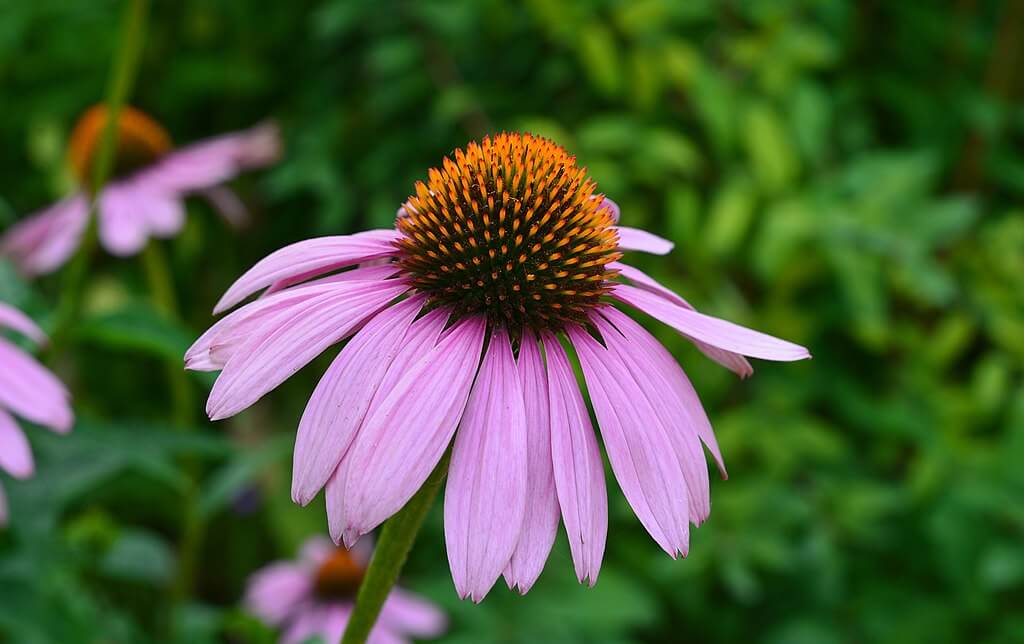In light of the growing body of scientific literature around medical cannabis, public interest in the therapeutic potential of cannabinoids is at an all-time high. Cannabinoids are now a mainstay in several burgeoning industries including sports medicine, snack foods and vaping. However, it’s worth noting that they don’t only come from cannabis — and are more commonly found in nature than you might think.

A crash course on cannabinoids
Cannabinoids are natural compounds found in a variety of plant life. The nomenclature comes from the fact that their discovery is a direct result of medical research into the cannabis plant led by British chemist Robert S. Cahn in 1940. As of this writing, cannabinoids are classified into three groups: endocannabinoids, phytocannabinoids and synthetic cannabinoids.
The most well known cannabinoids today are the psychoactive cannabinoid tetrahydrocannabinol (THC) and its non-psychoactive sibling cannabidiol (CBD). However, there are plenty of others in existence with documented benefits of their own. These include cannabichromene (CBC), cannabinol (CBN) and cannabigerol (CBG).
From plant to product, cannabinoids progress through three phases in the extraction and manufacture process. Tetrahydrocannabinolic acid (THCA), for instance, occurs naturally in biosynthesis before the cannabis plant is harvested and THC is extracted after decarboxylation. The THC can then be selectively degraded to create products like Delta-8-THC. Cannabichromenic acid (CBCA) is similarly rendered into CBC through decarboxylation and can be degraded to make cannabicyclol (CBL). Going beyond cannabis, how exactly do cannabinoids fit into the healing powers of nature? Now that you know everything there is to know about where they come from, let’s go over how cannabinoids work, as well as five examples of common outdoor plants that contain them other
than cannabis.
How Do Cannabinoids Work Within the Human Body?
Cannabinoids are active compounds that interact with a network of receptors throughout the human body known as the endogenous cannabinoid system (ECS). These are classified into two groups, by location and function:
- Cannabinoid receptor type 1 (CB1) receptors are located within the peripheral nervous system and central nervous system, governing the uptake and throughput of hormones and neurotransmitters into the brain
- Cannabinoid receptor type 2 (CB2) receptors are located in the peripheral organs and immune system, governing the production of peptides, enzymes and signaling molecules
that influence processes such as the bod’s pain and stress response
Cannabinoids affect neurophysiological changes in the human body by altering the behavior of CB1 and CB2 receptors. This can be observed in psychoactive cannabinoids like THC — which can affect spatial awareness, coordination and sense of time — as well as non-psychoactive cannabinoids like CBD, which can ameliorate the intensity of seizures associated with Dravet
syndrome. The modulatory effects of cannabinoids on the ECS are currently being studied by medical researchers for their actions on dopamine and serotonin, as well as their implications on mood and anxiety disorders.
Cannabinoids in Coneflower (Echinacea)
With its history of therapeutic applications dating back thousands of years, it’s no surprise that Echinacea contains not only cannabinoids, but N-alkylamide phytonutrients which are “cannabimimetic” compounds (i.e. functionally similar to cannabinoids) that also interact positively with the ECS. Echinacea shines in boosting the immune system and shortening the duration of common illnesses like the flu, common cold, pharyngitis and cough.
Cannabinoids in Black Pepper (Piper nigrum)
Black pepper is one of the most commonly available sources of a piperine, which essentially improves the body’s ability to combat common chronic diseases by reducing hepatic steatosis and lowering insulin resistance. Black pepper is also a rich source of the anti-inflammatory terpene (find out more about terps in cannabis here) known as beta-caryophyllene. It’s incredible utility as a seasoning aside, the therapeutic properties of black pepper make it a must in the kitchen.
Cannabinoids in Yellow Immortelle (Helichrysum italicum)
Closely related to the common backyard sunflower these plants in the genus Helichrysum are rich in cannabinoids. This genus which is in the sunflower family is comprised of over 600 species of plants containing amorfrutins-phytocannabinoids that function similarly to CBG in their reduction of pain, suppression of nausea and antitumoral properties. Helichrysum are also highly sought after for their seeds, which are rich in vitamin E, linoleic fatty acids and magnesium.
Cannabinoids in Cacao (Theobroma cacao)
With documented therapeutic uses dating back to Mayan civilization, the beneficial properties of cacao are common knowledge, and for good reason. It’s packed with flavonoids that lower blood pressure and reduce the risk of diabetes, as well as plenty of potassium to aid against heart disease and muscle soreness. If you aren’t impressed yet, cacao also contains cannabimimetic N-acylethanolamine fatty acids which promote fertility, memory and appetite by increasing anandamide activity.
Cannabinoids in Black Truffles (Tuber melanosporum)
Another rich source of the anandamide endocannabinoid is the black truffle or “black diamond” so called because of it being so highly sought after that it sells for over $2,000 a pound. Black truffles are said to have been hunted by specialized truffle pigs since the days of ancient Rome. Aside from anandamide, they are also loaded with antioxidants that lower cholesterol and fight bacterial infections — making them excellent for outdoor-oriented individuals prone to injury, such as hikers or mountaineers.
-Article Written by freelancer Paul Lewin-







3 Responses
This is awesome! Thanks for sharing
Brilliant article…. I will get stuck in
Excellent info, thanks.
Always liked black pepper and could tell that it was helping my health.